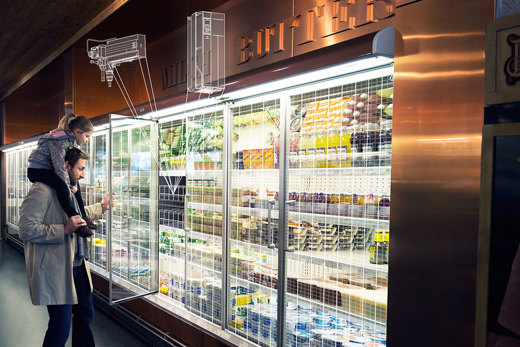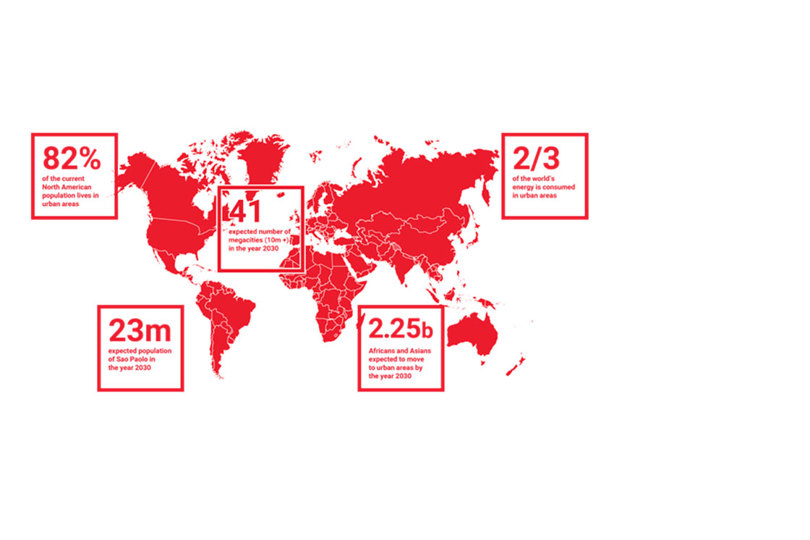
Let’s give you some great examples on how to cut energy consumption with smart technology. Like building flexible supermarkets.
Getting the basics right
1. Electric motor systems consume 50% of all electricity worldwide. 80% of electric motors are not equipped with variable speed drives, meaning that they work full speed regardless of need. By deploying variable speed drives and other system-wide efficiency measures, we can reduce motor energy consumption by up to 40%, and global electricity consumption by 8% (IEA WEO 2016). Payback time: 2-4 years.
2. Empower people to control their energy use: Optimizing control of our heating, cooling and ventilation systems reduces energy use on average by 22% per building, with a payback of 2 years (Ecofys). Two keys are room temperature control and balancing: more than 500 million radiators are still equipped with manual valves and do not allow citizens to control their room temperature and energy consumption. Installing individual room controls (e.g. thermostatic radiator valves) could lead to €10-15 billion in annual savings.
Taking a system approach
3. An energy neutral water cycle: Water and wastewater facilities account for 30-50% of municipalities’ total energy bill and 4% of global electricity consumption. But with a combination of energy efficiency measures and energy recovery, the entire water sector can be energy neutral. In Aarhus, Denmark, the city turned a local waste water facility into a producer of renewable energy (biogas) (IEA WEO 2016). Payback time: 5 years.
4. Data centers on a global level already consume more electricity than the UK, and emit the same amount of carbon as the entire airline industry. Electricity is usually the largest single element of operating costs for data centers, varying from 25 to 60%. At a Facebook data center in Sweden, we have slashed nearly 50% of energy costs.
Energy recovery
5. Recovering heat from refrigeration systems: A small supermarket in Sønderborg, Denmark, achieved annual savings of €30,000 and reduced CO2 emissions by 34% through energy recovery. In Germany, where about 1.4% of electrical energy consumption is used for refrigeration in supermarkets, similar measures could lead to final energy savings of 2.6 million tonnes of oil equivalent. per year, and energy cost savings of €1.8 billion. Payback time: 1.5 years.
6. District energy with waste heat: District energy is the only way to utilize low-energy, low-grade waste heat or free cooling sources for end-use in buildings (UNEP). It can use e.g. surplus heat from data centers, industrial processes or even sewage water. Recovering all of Europe’s waste heat could cover the heating demand of our entire building stock.
Sector coupling
7. Flexibility thanks to supermarkets: The non-utilized operating capacity of compressors used in supermarket refrigeration systems can act as a heat pump and produce heat from electricity during wind peak production, when connected to a district energy network. These measures could allow EU supermarkets to provide 150 TWh of heat. Refrigeration systems can also be used for demand side management. 500 supermarkets can add 26.5 MW short term flexibility.
8. District heating and cooling can balance the volatility of renewable electricity: During periods of oversupply, excess electricity from e.g. wind can be used to generate heat with large scale heat pumps and even be stored in the district energy grid. Heat storage is 100 times cheaper than electricity storage!
Digitalization
9. Exploit the potential of digital, connected solutions: Smart control of heating, cooling and ventilation can double the performance of these technologies. On average, energy consumption can be reduced by 38% per building. New digital technologies can continuously monitor and adapt consumption, inform consumers of their energy use, optimize renewable energy self-consumption and help integrate buildings into electricity and district heating and cooling systems. Payback time: 3-5 years
10. Innovation in the food-energy-water nexus: We can track and trace products across the entire cold chain through digitalization. This results in better quality food, reduces food loss, and ultimately conserves energy and water use for the production of food that would otherwise be lost.

Urban Efficiency is key to sustainable growth
Our cities are the main drivers of the world’s economic output, but they are also massive consumers and account for 60-80% of energy consumption and 75% of carbon emissions. If we want to reach the goals of the Paris agreement and keep global warming below 2 degrees Celsius, we need to focus on our cities.
Explore our theme site on urban efficiency and discover why it’s the most effective way to turn the challenges of our cities into opportunities.
